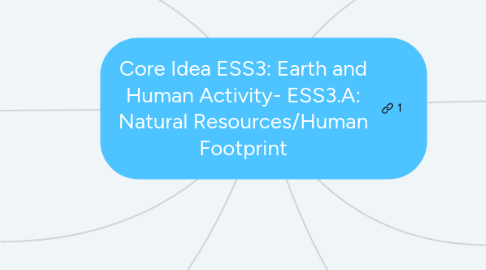Core Idea ESS3: Earth and Human Activity- ESS3.A: Natural Resources/Human Footprint
создатель Cassandra Farrell


1. Ocean
1.1. The entire body of saltwater that covers about 71% of Earth.
2. We need to focus on the three R's:
2.1. Reduce
2.1.1. Reuse
2.1.1.1. Recycle

